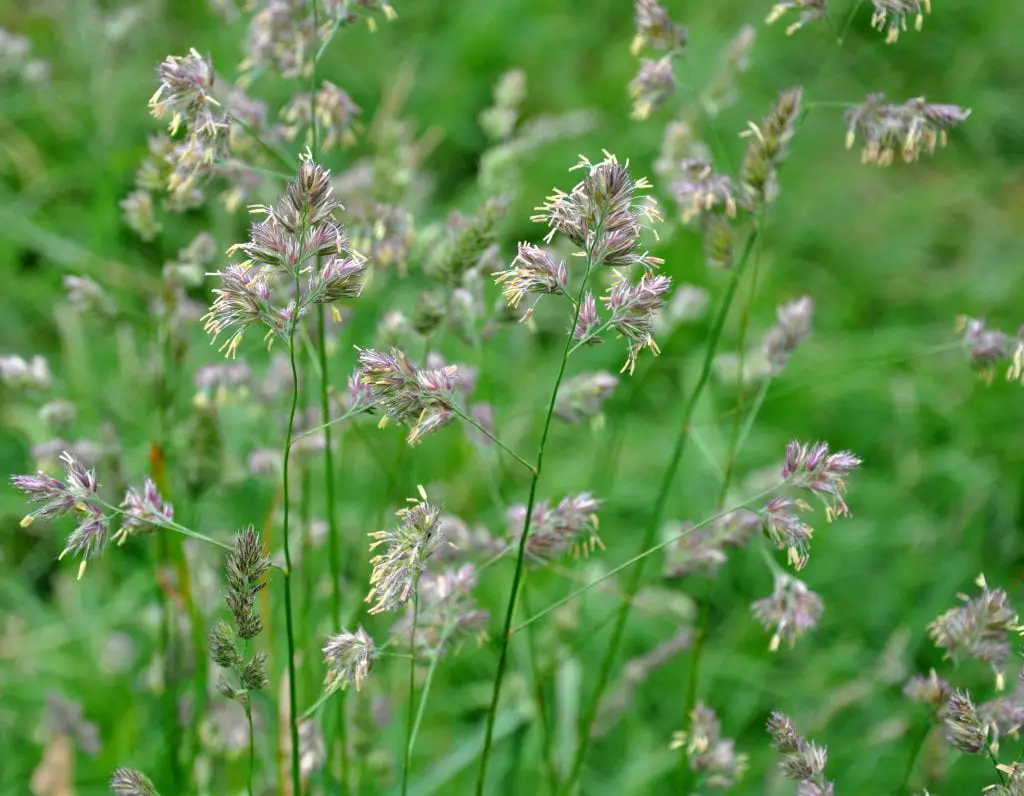
Image – Wikimedia Commons / Wikimedia Commons
Herbs that grow in gardens are often considered ‘non-gratas plants’; not surprisingly, their growth rate is often faster than that of their main species. But why not give at least some of them a chance? For example, the dactylis clustered It has different uses, and it also produces pretty pretty flowers.
Due to its height, it is very interesting to create compositions of herbs or tall herbaceous plants, with flowers and / or leaves that stand out. What’s more, is perennialwhich means that it lives for several years.
Origin and characteristics of dactylis clustered

Known as dactyl or ball grass, it is a perennial plant of the grass family native to Europe, Asia and North Africa. It grows to a height of 60 to 120 centimeters including its flower stems.forming clumps. Its leaves are long, pointed, soft to the touch when young and hard when they reach adulthood.
Its flowers are grouped in spikelets, and are light in color. The fruit is simple, small and inside which are the seeds.
What is?
Forage
The ovillo grass is a very important forage plant. Its rusticity and resistance to frost make it one of the easiest species to grow.. As if this were not enough, it sprouts strongly after the harvest, something that is done at the end of spring.
And why not say so? It is a beautiful herb, which can be planted on the edges of garden paths, or in pots.
For cats
The dactylis clustered it is also known as cat grass. These animals they consume it because it is a plant that has a purgative effectsomething that is very useful when they swallow a lot of hair or if they have eaten something that has not finished to sit well.
Does it give allergies?
Grasses are a type of grass whose pollen causes allergy symptoms in billions of people. The dactylis clustered it’s one of those plants, so if you are allergic to these plants you can have it, but only if you cut the flower stems in order not to cause itching or eye and nasal irritation.
What are the care that the dactyl requires?

Image – Wikimedia / AnRo0002
If you dare to have a copy, we recommend that you provide it with the following care:
Location
The dactylon glomerata it is an herb that has to be abroadif possible in a place where the sun shines directly throughout the day.
Earth
Since it can be both in the ground and in a pot, the type of soil will vary:
- Flower pot: universal substrate can be mixed with 30% perlite, although it will also grow well just with mulch or peat.
- the garden: it is not demanding, but it prefers soils rich in organic matter.
Irrigation
It is a plant that needs regular watering throughout the yearbecause although it tolerates drought somewhat, its growth is faster if it is not made to pass through it. Therefore, it is highly advisable to water an average of 3 times a week during the summer, and somewhat less the rest of the year.
Subscriber
From early spring to late summer you can fertilize a little with natural products, such as mulch, compost or guano, among others, following the indications specified on the package.
Just keep in mind that if you grow it in a pot it is better to use fertilizers in liquid format, since otherwise you could worsen the drainage of the substrate and, as a result, its roots could rot as the excess water from the irrigation would have some trouble getting out.
Multiplication
The dactylon glomerata multiplies by seeds in springfollowing this step by step:
- First, a seedbed (flowerpot, seedling tray, plastic containers with a hole in the base) is filled with universal substrate or soil for seedlings (for sale here!).
- Afterwards, it is watered well, moistening all the earth.
- Then, the seeds are placed on the surface of the earth, ensuring that they are separated from each other.
- They then cover with a thin layer of substrate.
- Finally, it is watered again, this time with a sprayer / atomizer to moisten that surface layer of the earth.
They will begin to germinate more or less after 6-7 days.
Harvest
Is done late springwhen the spikelets begin to form. It can be done after flowering, but it is not recommended to wait as it loses its quality and digestibility when flowering, so it would not be useful.
It tolerates grazing, but not if it is intensive. This is why it is advisable to practice rotational grazing, or at least to regulate it so that the grass can sprout again.
Planting or transplanting time
In springwhen the frosts have passed.
Rusticity

Image – Wikimedia / AnRo0002
It resists frosts of up to -7ºC.
What did you think of dactylis clustered? Have you ever heard of her?

